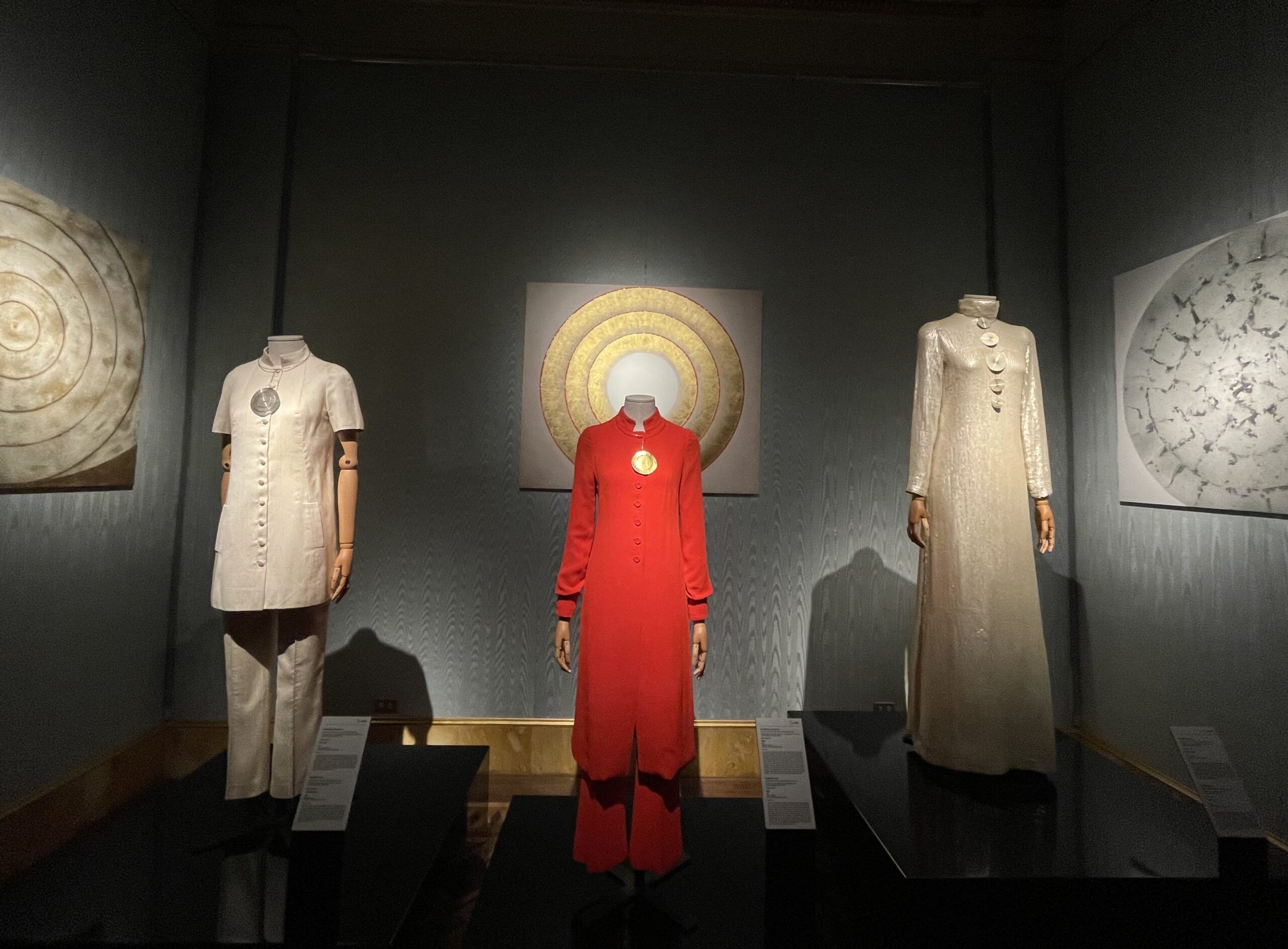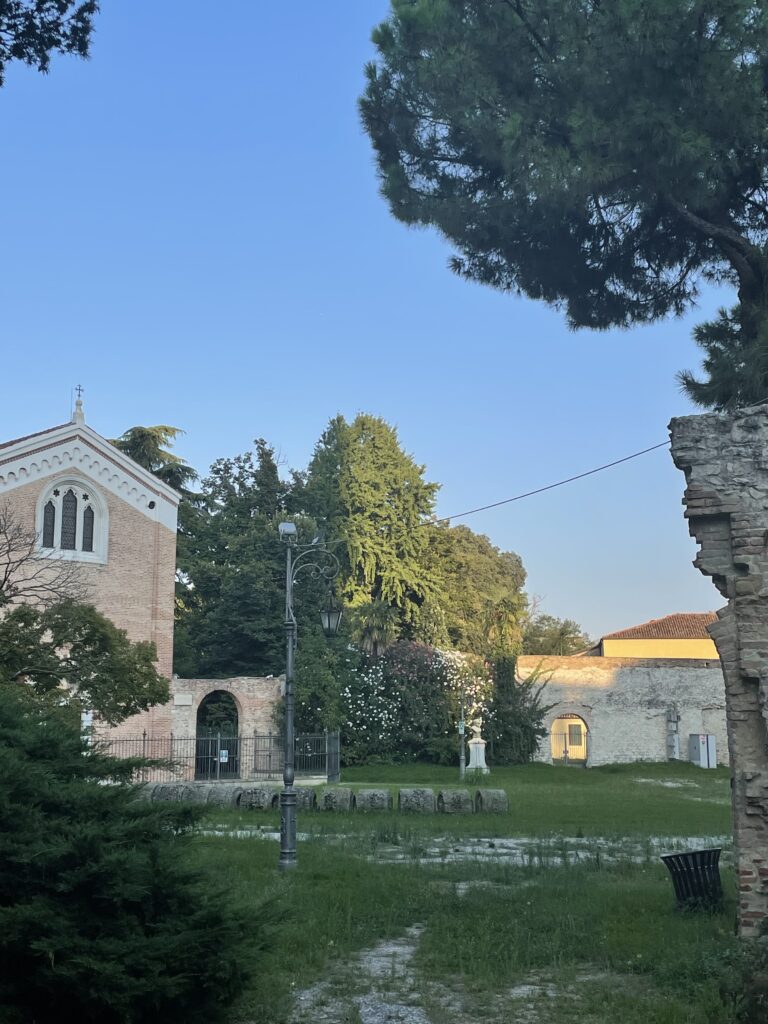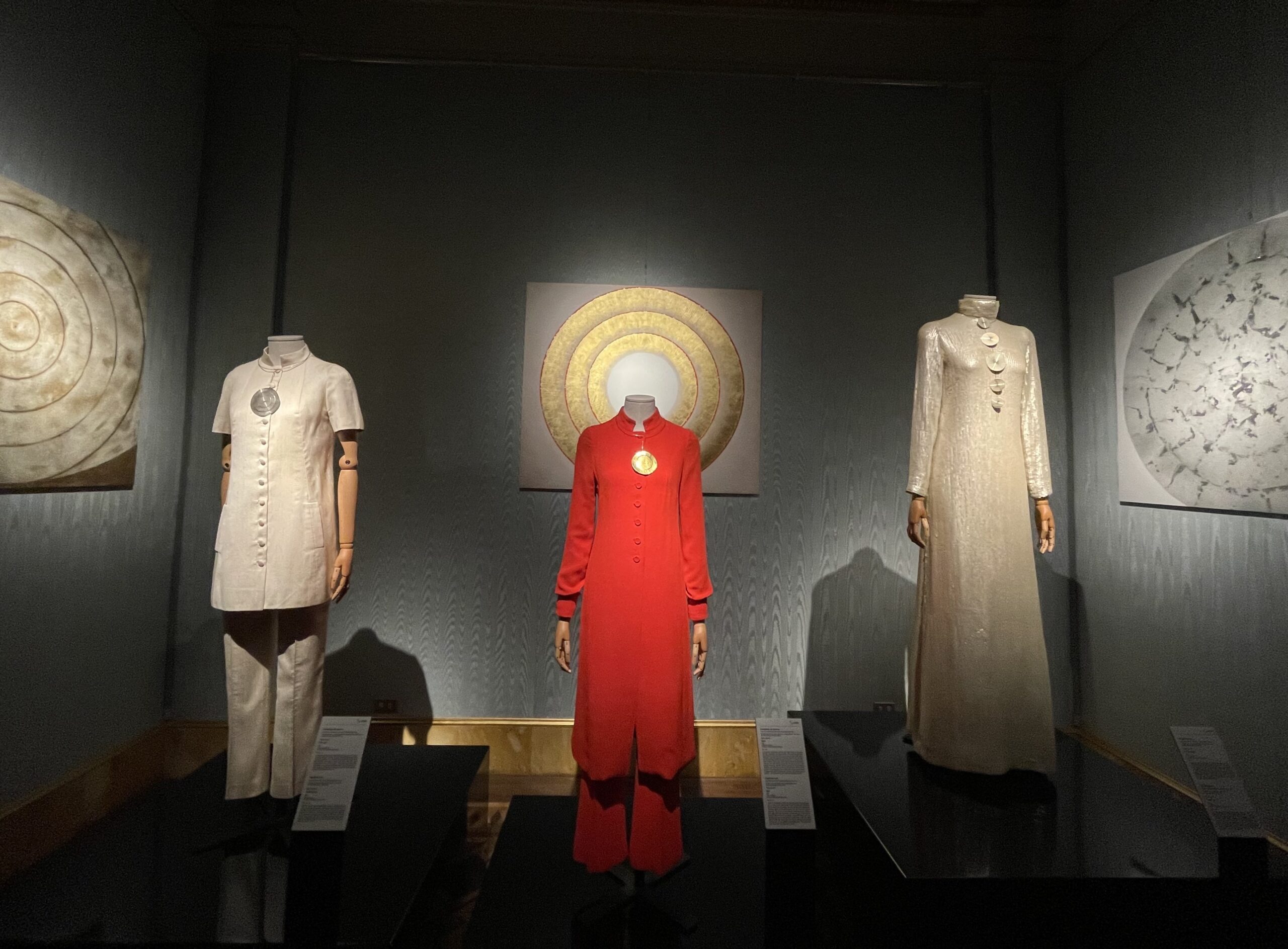The stratified building is a mammoth of design, several renaissance and architectural museums housed within the old bank: herculean figures move the viewer in scherzando amongst the daring mirrors, traversing historical battle friezes and old Florentine portraits. Amongst the tourists, art guards and generous collections is a canvassed space, dedicated to the visionaria of Italian fashion, Germana Marucelli.
The curator’s pre-ambling score describes the temporary exhibit and Germana’s pieces as ‘woman in constant metamorphosis’; the original furniture and oval dimensions of the salon walls are contained in the exhibit, unfolding an immersive experience that combines ‘in un connublio perfetto tra arte, moda, spazio, volume e colore’, (Uffizi catalogue description 2023: Compositore Spaziale Rosso, Paulo Scheggi).


Getulio Alviani’s Interpretazione speculare, is presented alongside Carla Venosta’s Tavolo, and accompanied by several works by the designer Paulo Scheggi. Counterpointing, each element works together to signal the different design lines that Germana made throughout her career. Scheggi’s 1964 inter-surface canvases act as precursors to Mauricelli’s Optical Line (Spring/ Summer 1965), as well as laying the foundation for his own later works, which can be credited with the forging of the spatial art epoch in Italy. The placement of these objects brings the viewer further into Mauricelli’s design practice, her intellect and technique, whilst leaving the panorama of the museum in the periphery.
The musicality of Mauracelli’s lines resounds in her sketches: Presenze (Presences) reverberates the renaissance technicalities of figure, whilst displaying an antagonism in the golden material itself. In another space, an angular armoured bodice floats above azzure culottes. There are hints of space odyssey, especially in the Alluminio line- the ‘Completa da sera’ suit (Spring/ Summer 1969) – moves beyond a dyad through the immersive reflectors that the gallery have strategically placed, with the lapis silk that ripples to the museum fans. [fig.1 and 2]


Giotto al funghi
The feast of the assumption- a national holiday in Italy, leads us north to Padova and coincidently to Giotto’s Scrovegni Chapel dedicated to the Madonna and nestled in the Roman Arena ruins. By train, Firenze S.M.N station offers some direct trains in the direction of Venezia S. Lucia; in August the journey took just short of two hours, avoiding the crowds that were staying onto Venice. Padova’s different pace seems not only a reflection of the religious holiday but the significance of Giotto’s art trail of 14th century frescoes (a world heritage site since 2021). The opening of the chapel to the public for the evening series Giotto sotto le Stelle from March and November is an atmospheric way to explore the chapel, located in the city’s old centre. Booking a day in advance is advised due to the limited capacity of the site. The Giardini dell’Arena (adjacent to the site) has several drinks and food stalls for before the visit, whilst some other restaurants opened later, gaining a two euro commission for holy day…
Pinsa Pizzeria has a good selection of beer, pizze and pinse on Corso Giuseppe Garibaldi Street. The Papa Francesco or Garibaldi pizze were recommended and deviously good. In the region, you may also find a curious pasta, strangolapreti- nicknamed as priest chokers- the twisted shapes are best with chanterelle and veronese mountain cheese or, with ragu.
The lure of Padova’s Giotto cycles- repaired from twentieth century war damages- follow the painter’s early journey through the medieval town before his emergence back in Florence as a renowned gothic star. They remain an interesting way to navigate the city today. However, the one-way systems and number caps may entice you to the outdoor spaces the city has: to its food markets such as outside Ragione Palace and the Gastronomia marcolin or to the Orto Botanico gardens of the university. Near the Basilica of Saint Anthony (Padua’s saint) the gardens lie south from the main station, the Via S. Francesco will take you past the perimeter of the reliquary towards the main entrance of the pilgrimage site, opening onto the piazza del Santo. The Magnolia tree (1786) and infamous hollow Plane Tree (1680) are important points within the garden, the museum that adjoins it illustrates the romanticisation and study of the plants by Goethe as well as showcasing a strangely large clay mushroom collection. The garden’s app, Botanical Garden of Padova, is a great point of reference to learn more about the history of the trees, fauna and fungi and how certain plants came to be in the ambient northern city.



